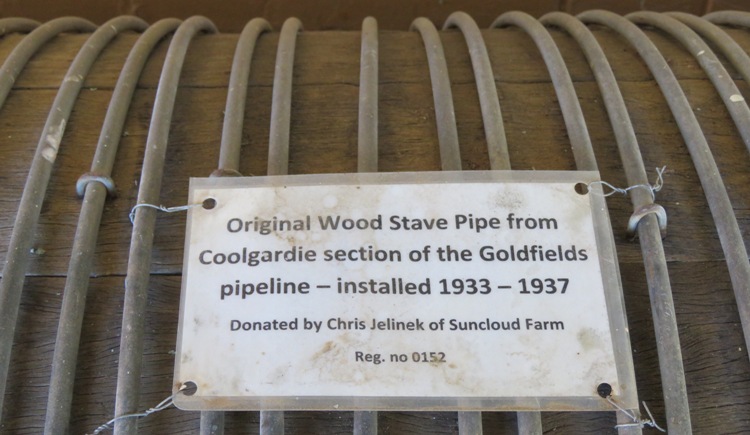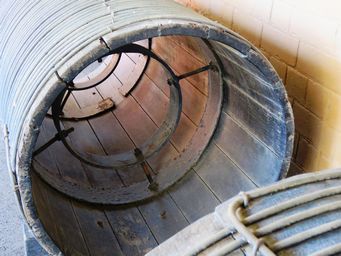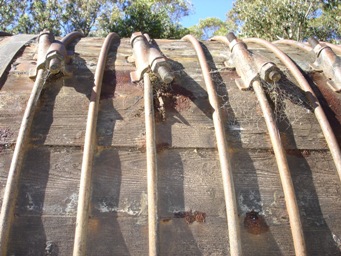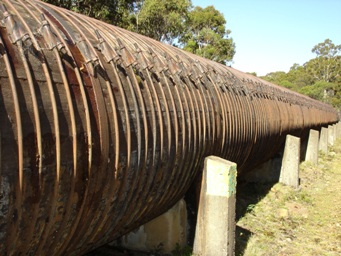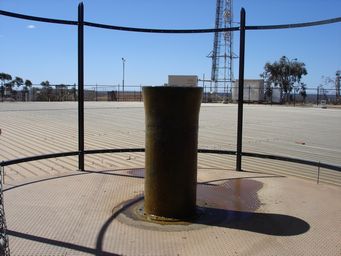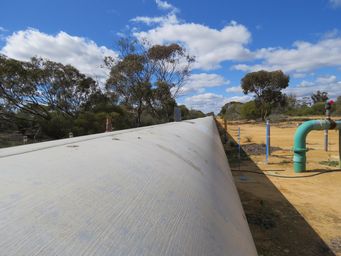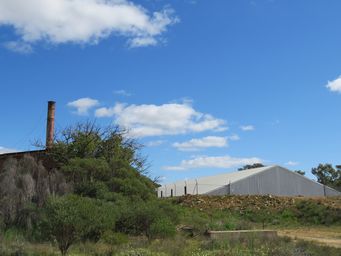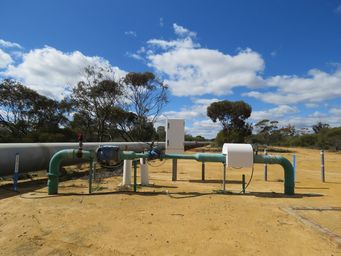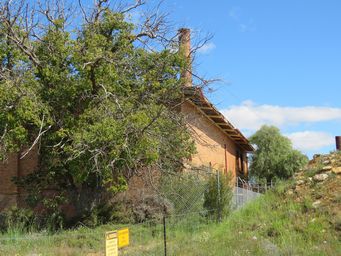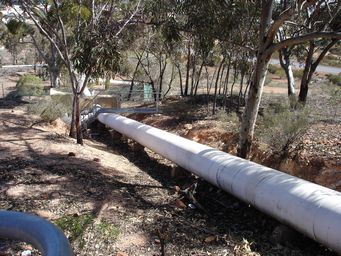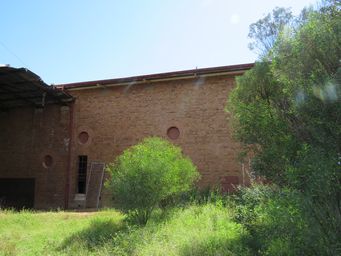Australia So Much to See

During 1933 to 1937, sixty four kilometres of the original steel mains were replaced with pipes made of planks from Karri trees. Constructed similar to a wine barrel, sections were joined by steel collars.
In all, 21 sections of these wooden stave
pipes of varying length were installed. Corroding of the original steel pipeline, particularly in areas of high salinity, made
replacement necessary.
In part to provide local employment during the Depression years, in part because the timber could be obtained
cheaper than steel.
#4 pump station
This pump station building is located some fifty metres from the highway three kilometres west of Merredin townsite. Just
the shell of the building now remains. The design consisted of two rooms with a passage in between under the roof: the boiler room
with a concrete floor and an engine room with a lower floor at basement level of concrete. The upper or working floor of jarrah rested
on steel joints. The engines and pumps were bolted on to granite bed-stones supported by brick piers resting on the lower concrete
floor. At the other end, the cylinders for the steam that powered the pumps were allowed to move freely on expansion rollers. Pulleys,
tree trunk derricks and wooden rollers lifted the heavy cylinders, boilers and pumps into place.
This once significant structure is
now a stabilised ruin with National Trust interpretive signs at the site near the Information Bay rest stop and picnic shelter.
Stretching 560 kilometres from Perth to Kalgoorlie, Goldfields remains the longest water supply pipeline in the world. It still supplies
water to the area today.
Strong galvanised wire held the timber staves in place.
We saw stave pipes still in use in Tasmania. Pictured below, these were taking water from a small lagoon on the Clarence River, to join with water from other lakes and dams for the hydro-electric power network.
The original pumping stations between Mundaring Weir and Kalgoorlie were
#1 Pumping station is at the base of Mundaring Weir
#2 Pumping Station was around two kilometres north east of Mundaring Weir, and ceased operating in 1956 when with the conversion to electric pumps, this station was no longer needed
#3 Pumping station is at Cunderdin, and the original building now houses the Cunderdin Museum
#4 Pumping station is on the western edge of the Merredin townsite
#5 Pumping station is at Yerbillon, between Westonia
and Bodallin
End of the journey at Mount Charlotte in Kalgoorlie, with the last section of the pipeline (above left) and the huge tank the water flows into (above right). The water that left Mundaring between five and eleven days prior has reached its destination.
From Dedari, the water flows by gravity to the lower altitude at Mount Charlotte, Kalgoorlie.
The pipeline becomes narrower as we head east. Seen here at Woolgangie.
Resources
Golden Pipeline Heritage Trail
Goldfields Water Supply Scheme
Golden Pipeline Celebrates 120 years
Wikipedia - Goldfields Water Supply Scheme
Information sheets from Merredin Railway Museum.
Rediscover Merredin tourist
booklet.
#6 Pumping station is at Ghooli, to the east of Southern Cross
Photo above shows the new pumping station and the old.
Photos
to the right are of the former pumping station.
The pipeline just north of the Ghooli pumping station, (below).
#7 Pumping station is at Gilgai, around 50 kilometres east of Yellowdine Roadhouse, and near the Boorabbin National Park. This is no longer used and all buildings and equipment have been removed, leaving only a rectangular ground level reservoir, which is no long covered or used.
